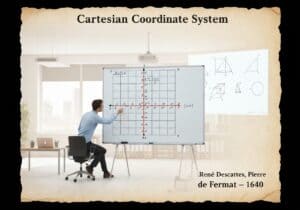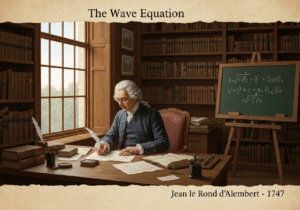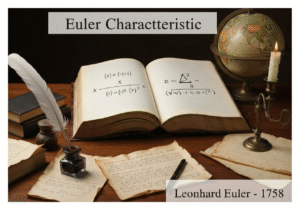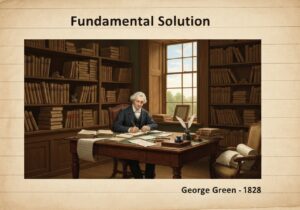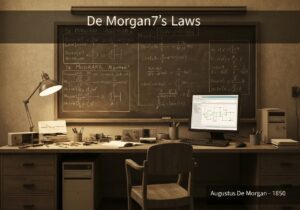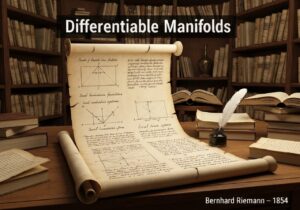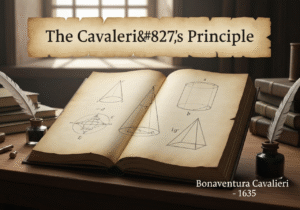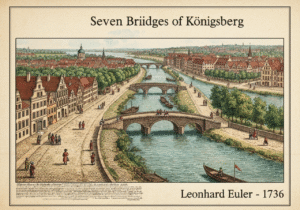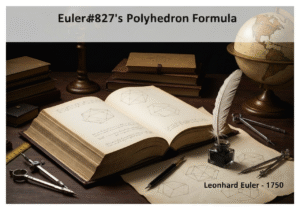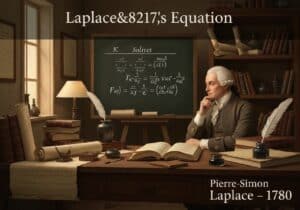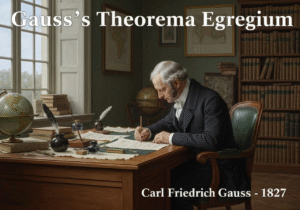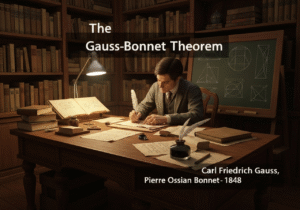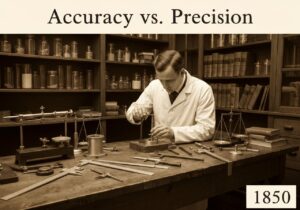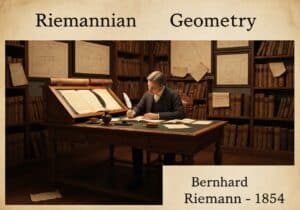A fundamental second-order linear parabolic partielles Differential equation describing heat distribution or other diffusion processes. Its canonical form is [Latex]\frac{partial u}{partial t} = \alpha \nabla^2 u[/latex], where [latex]u(\vec{x},t)[/latex] is temperature, [latex]t[/latex] is time, and [latex]\alpha[/latex] is thermal diffusivity. Solutions model how an initial temperature distribution evolves, smoothing out irregularities over time and approaching a steady state.
Die Wärmegleichung
- Jean-Baptiste Joseph Fourier
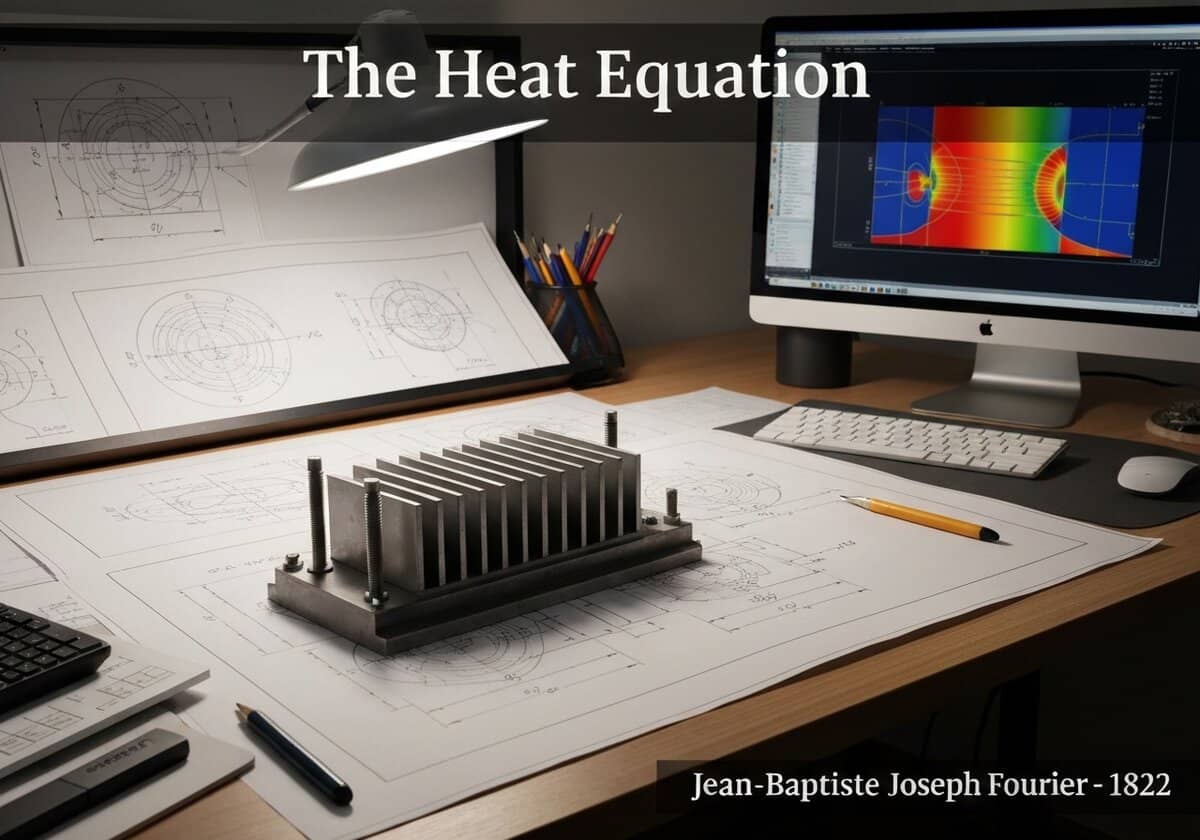
The heat equation is the prototypical example of a parabolic PDE. The term [latex]\nabla^2[/latex] is the Laplace operator, which in one spatial dimension [latex]x[/latex] simplifies the equation to [latex]u_t = \alpha u_{xx}[/latex]. The constant [latex]\alpha[/latex] represents the thermal diffusivity of the material, a measure of how quickly heat spreads. A key property of the heat equation is its ‘infinite speed of propagation’; a change in temperature at any point is felt instantaneously, though infinitesimally, everywhere else in the domain. This is a mathematical idealization of the rapid nature of diffusion.
Another defining characteristic is its smoothing effect. Even if the initial temperature distribution [latex]u(\vec{x},0)[/latex] is discontinuous (e.g., a sharp jump in temperature), the solution [latex]u(\vec{x},t)[/latex] for any time [latex]t > 0[/latex] becomes infinitely differentiable (smooth). This reflects the physical reality that sharp temperature gradients cannot be maintained and will immediately begin to even out. The maximum principle for the heat equation states that the maximum value of [latex]u[/latex] must occur either at the initial time or on the boundary of the spatial domain, meaning no new hot spots can spontaneously appear inside the material.
Solutions are often found using the method of separation of variables or by employing Fourier transforms, which were developed by Fourier precisely for this purpose. The fundamental solution, known as the heat kernel, represents the temperature distribution resulting from an initial point source of heat.
Typ
Unterbrechung
Verwendung
Vorläufersubstanzen
- newton’s law of cooling
- die Entwicklung der Infinitesimalrechnung
- Konzept der partiellen Ableitungen
- fourier’s work on trigonometric series (fourier series)
Anwendungen
- Wärmetechnik für Kühlkörperdesign
- Finanzmodellierung (die Black-Scholes-Gleichung ist eine Variante)
- Bildverarbeitung zur Rauschunterdrückung (Perona-Malik-Diffusion)
- Neurowissenschaften zur Modellierung der Signalausbreitung von Neuronen
- Chemieingenieurwesen zur Modellierung der molekularen Diffusion
Patente:
Mögliche Innovationsideen
!Professionals (100% free) Mitgliedschaft erforderlich
Sie müssen ein Professionals (100% free) Mitglied sein, um auf diesen Inhalt zugreifen zu können.
VERFÜGBAR FÜR NEUE HERAUSFORDERUNGEN
Maschinenbauingenieur, Projekt-, Verfahrenstechnik- oder F&E-Manager
Kurzfristig für eine neue Herausforderung verfügbar.
Kontaktieren Sie mich auf LinkedIn
Integration von Kunststoff-Metall-Elektronik, Design-to-Cost, GMP, Ergonomie, Geräte und Verbrauchsmaterialien in mittleren bis hohen Stückzahlen, Lean Manufacturing, regulierte Branchen, CE und FDA, CAD, Solidworks, Lean Sigma Black Belt, medizinische ISO 13485
Wir suchen einen neuen Sponsor
Ihr Unternehmen oder Ihre Institution beschäftigt sich mit Technik, Wissenschaft oder Forschung?
> Senden Sie uns eine Nachricht <
Erhalten Sie alle neuen Artikel
Kostenlos, kein Spam, E-Mail wird nicht verteilt oder weiterverkauft
oder Sie können eine kostenlose Vollmitgliedschaft erwerben, um auf alle eingeschränkten Inhalte zuzugreifen >Hier<
Historischer Kontext
Die Wärmegleichung
(wenn das Datum nicht bekannt oder nicht relevant ist, z. B. "Strömungsmechanik", wird eine gerundete Schätzung des bemerkenswerten Erscheinens angegeben)
Verwandte Erfindungen, Innovationen und technische Prinzipien
